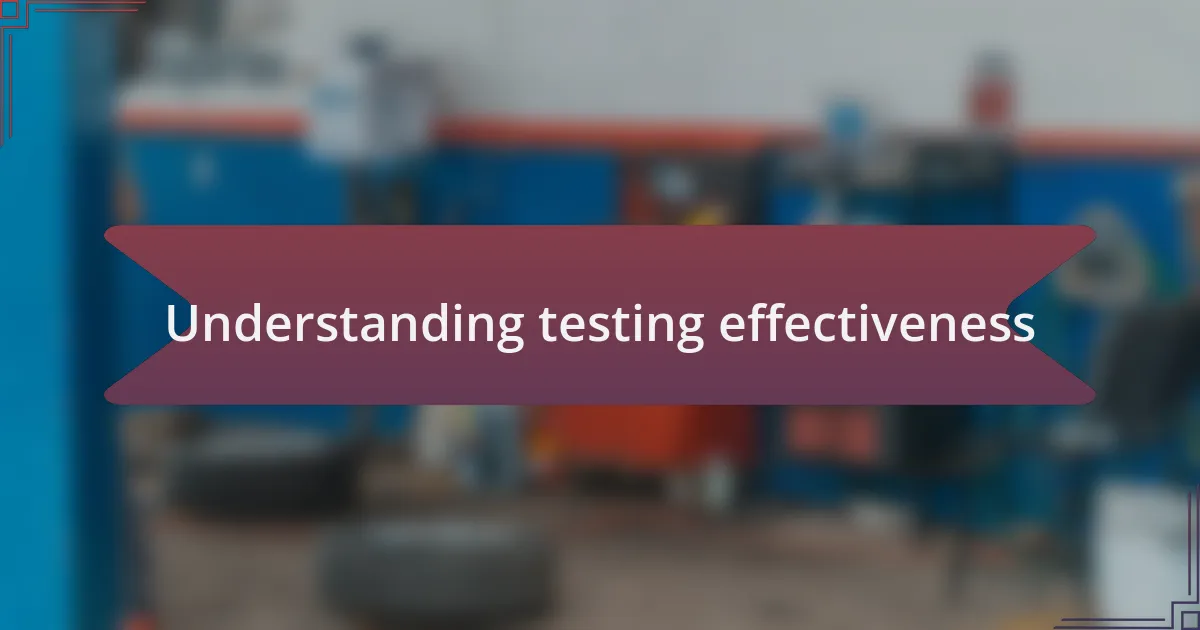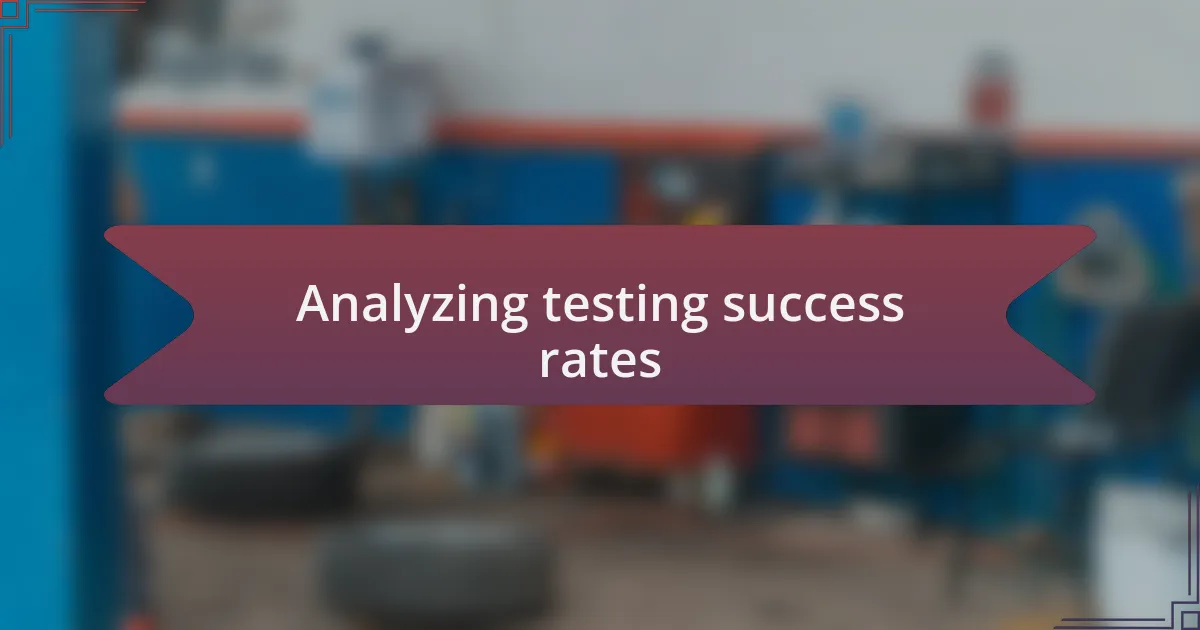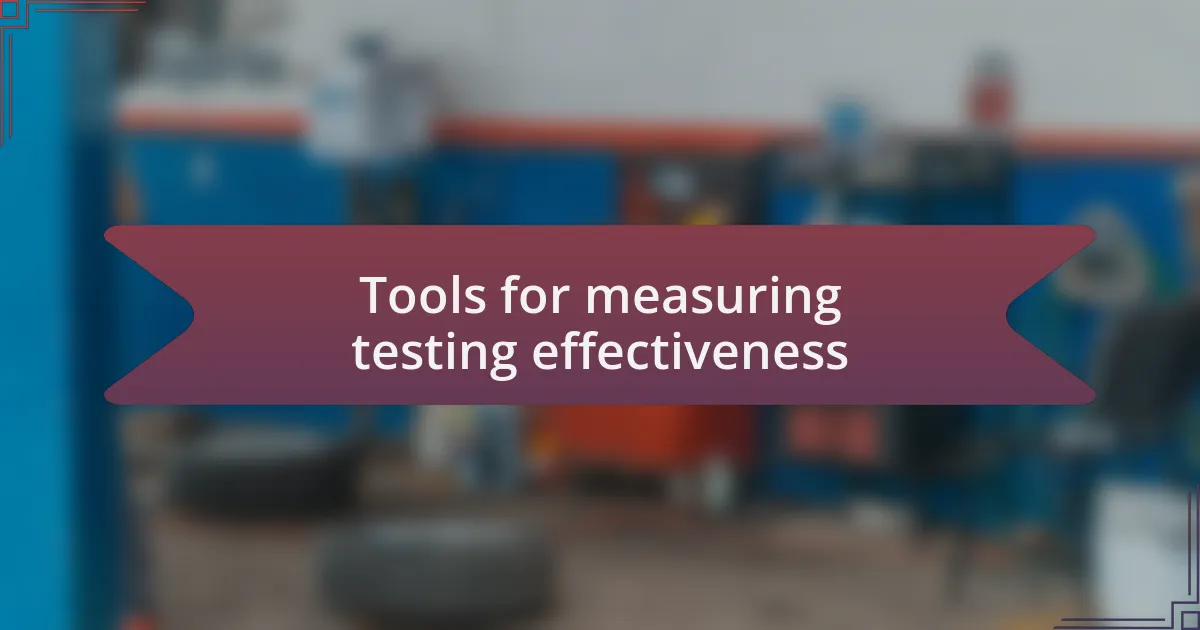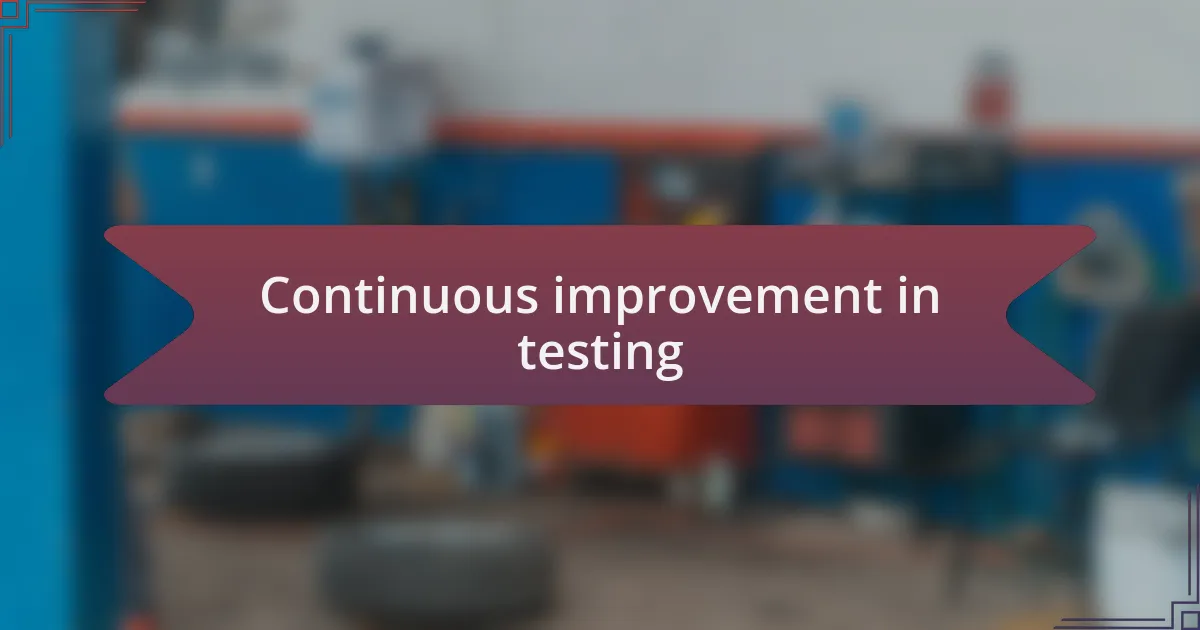Key takeaways:
- Understanding testing effectiveness requires evaluating strategies that align with high-quality outcomes rather than just finding bugs.
- Key metrics such as defect density, cycle time, and test case pass rate are essential for measuring the success of testing efforts.
- Tools like JIRA, CodeClimate, and automation frameworks enhance testing processes and improve software reliability by uncovering hidden issues.
- Encouraging team collaboration and open feedback fosters a culture of continuous improvement, leading to more effective testing practices.

Understanding testing effectiveness
Testing effectiveness is a critical concept that often determines the success of a software project. When I think about it, I recall a project where meticulous testing revealed a hidden bug that could have cost us dearly if it had gone live. It’s moments like these that underline just how crucial it is to measure whether our testing efforts are genuinely identifying issues rather than just completing a checklist.
I remember the early days of my career when I struggled to understand what effective testing really meant. Is it just about finding bugs, or is there more to it? Over time, I’ve realized that measuring effectiveness involves evaluating how well our testing strategies align with high-quality outcomes. It’s not just about quantity but about ensuring we’re testing in a way that meaningfully enhances the software product.
When we talk about understanding testing effectiveness, we should ask ourselves how our tests correlate with user experiences. Have you ever deployed a feature that seemed flawless in tests but flopped in real-world use? Reflecting on such experiences shapes our approach, emphasizing that effectiveness is ultimately about anticipating user needs and ensuring our solutions are robust and reliable.

Importance of testing in software
Testing is the backbone of software development, serving as a safety net that catches potential issues before they escalate. I recall a time when a last-minute testing phase uncovered performance bottlenecks in a web application launch. It was a relief; revisiting those preliminary phases spared the team from a potentially disastrous user experience, showcasing how vital rigorous testing is.
When I think of testing, I often reflect on the moments when everything seemed to go smoothly, only to discover post-launch that the user interface didn’t perform as expected on different devices. Have you ever felt that sinking feeling? Those experiences taught me that testing isn’t just about bug-fixing; it’s about ensuring compatibility and stability across various scenarios. Such attention to detail can fundamentally alter how users interact with the software.
Moreover, the importance of testing resonates deeply with the idea of maintaining a good reputation. Once, I was part of a project that had a rough start due to overlooked flaws that frustrated users. That moment underscored for me the direct link between thorough testing and user trust. Each test we conduct is a step towards building confidence in our product and fostering lasting relationships with our users.

Key metrics for testing effectiveness
When it comes to measuring testing effectiveness, defect density stands out as a vital metric. It reflects the number of confirmed defects relative to the size of the software component, often measured in lines of code or function points. I remember analyzing a project where a high defect density prompted us to revisit our testing strategies, leading us to discover that our automated tests needed more coverage. That adjustment not only improved software quality but also boosted team morale as we saw tangible improvements.
Cycle time is another key indicator for assessing testing effectiveness. This metric indicates the time taken from the start of testing to the resolution of identified defects. In my experience, monitoring cycle time has been an eye-opener—I once participated in a project where we reduced our cycle time significantly by implementing better collaboration between developers and testers. It was exhilarating to witness how this synergy led to faster releases without compromising quality.
Lastly, I often evaluate the test case pass rate, which measures the percentage of passed test cases versus total executed ones. This metric can influence decision-making processes significantly. I vividly recall a time when a surprisingly low pass rate led my team to a deep dive into our test cases, revealing gaps in our testing approach. This not only reframed our testing priorities but also instilled a sense of responsibility within the team to ensure thorough evaluations moving forward. Isn’t it fascinating how such metrics can drive improvements and foster a culture of quality?

Analyzing testing success rates
When I analyze testing success rates, I often focus on the failure rate as a crucial metric. A low failure rate generally indicates that our tests are effective, but at times, I’ve seen the opposite be true; a seemingly acceptable failure rate masked underlying issues. Reflecting on a particularly challenging project, we learned that a failure rate hovering around the norm actually hid significant instability in our codebase, prompting a major code overhaul that took us back to the drawing board.
Another important aspect I consider is the test execution rate, which tells us how many of our planned test cases we actually run. There was a project where we started out strong with test execution, but as deadlines approached, our focus shifted. Missing out on executing those critical tests impacted our release more than I’d anticipated, leading to a frenzied post-release patching phase. That experience taught me that staying disciplined with our execution rate directly correlates with maintaining quality.
I also find it insightful to look at customer-reported defect metrics after a release. Tracking how many issues customers point out gives me a real-world gauge of our testing success. Once, after a major update, the influx of customer complaints made it painfully clear how our initial testing missed the mark. This situation fueled my drive to improve the testing process, as I wanted to ensure our users felt valued and that their experiences were a top priority. Isn’t it interesting how the voice of the user can guide further improvements and shape our testing strategies?

Tools for measuring testing effectiveness
When it comes to measuring testing effectiveness, tools like JIRA and TestRail have been invaluable for my team. These platforms track test cases and defects, streamlining our testing processes. I remember a project where we integrated JIRA for tracking bugs, and the clarity it provided transformed our communication within the team, making it easier to spot trends and prioritize critical issues.
Another powerful tool I’ve used is CodeClimate, which evaluates code quality after testing. It’s fascinating how metrics can reveal hidden problems; I recall a time when CodeClimate flagged potential issues in a module we thought was solid. That revelation prompted a collaborative effort to improve our coding standards, ultimately enhancing our overall software reliability.
I think it’s worth mentioning that automation tools, like Selenium, can further amplify our testing effectiveness. I’ve seen firsthand how automation not only speeds up the testing process but also uncovers inconsistencies that manual testing might miss. Have you ever considered how much time and hassle you could save by leveraging these automations? For me, it turned tedious routines into streamlined workflows, allowing me to concentrate on more complex testing scenarios.
![]()
Personal methods for tracking results
In my experience, tracking results often comes down to simple spreadsheets or customized dashboards. I’ve developed a straightforward method where I log each test case’s outcome alongside relevant metrics, like the time taken for execution and the number of defects found. This approach not only helps me visualize progress but also uncovers patterns over time that can inform future testing strategies—it’s amazing how a little organization can lead to significant insights.
I’ve also found value in having regular review sessions with my team, where we discuss the results from our tests. Recently, during one of these meetings, we identified a recurring issue that seemed minor but was impacting user experience significantly. By collaboratively analyzing our testing results, we were able to prioritize fixes effectively and enhance our product’s quality. Have you ever had a moment like that in your team? Those insights, born from discussions about what the numbers really mean, are often where the magic happens.
Another method I swear by is setting specific, measurable goals for each testing phase. For instance, I once aimed for a certain percentage of test coverage and tracked our progress weekly. This focus not only kept the team motivated, but it also turned abstract numbers into meaningful milestones, driving us toward continuous improvement. How rewarding it is to celebrate small wins along the way!

Continuous improvement in testing
Continuous improvement in testing is essential for refining processes and enhancing quality. One of the approaches I’ve adopted is conducting retrospective meetings after every major testing phase. I remember a time when my team dissected our last release and stumbled upon a workflow bottleneck that slowed us down significantly. It was eye-opening, and the collective “aha” moment led us to implement changes that not only streamlined our processes but also improved our testing turnaround time. How often do we pause to reflect on our journey and its impact?
Another practice I’ve integrated is encouraging team members to share their personal testing experiences during our daily stand-ups. Last month, one colleague shared a frustrating bug-finding expedition where traditional methods simply didn’t cut it. Her story inspired us all to experiment with new tools and methodologies, sparking a wave of innovative thinking. Isn’t it fascinating how sharing our struggles can pave the way for breakthroughs?
Lastly, I’ve realized that fostering a culture of open feedback within the team accelerates our growth in testing. There’s something powerful about creating a safe space where everyone feels comfortable discussing challenges. Recently, I felt inspired after a team member openly critiqued a test suite that I thought was flawless. Engaging in that dialogue helped us recalibrate our approach, ensuring we were not just testing for the sake of it, but truly evaluating our software’s efficiency. Isn’t it remarkable how a single conversation can change our perspective?